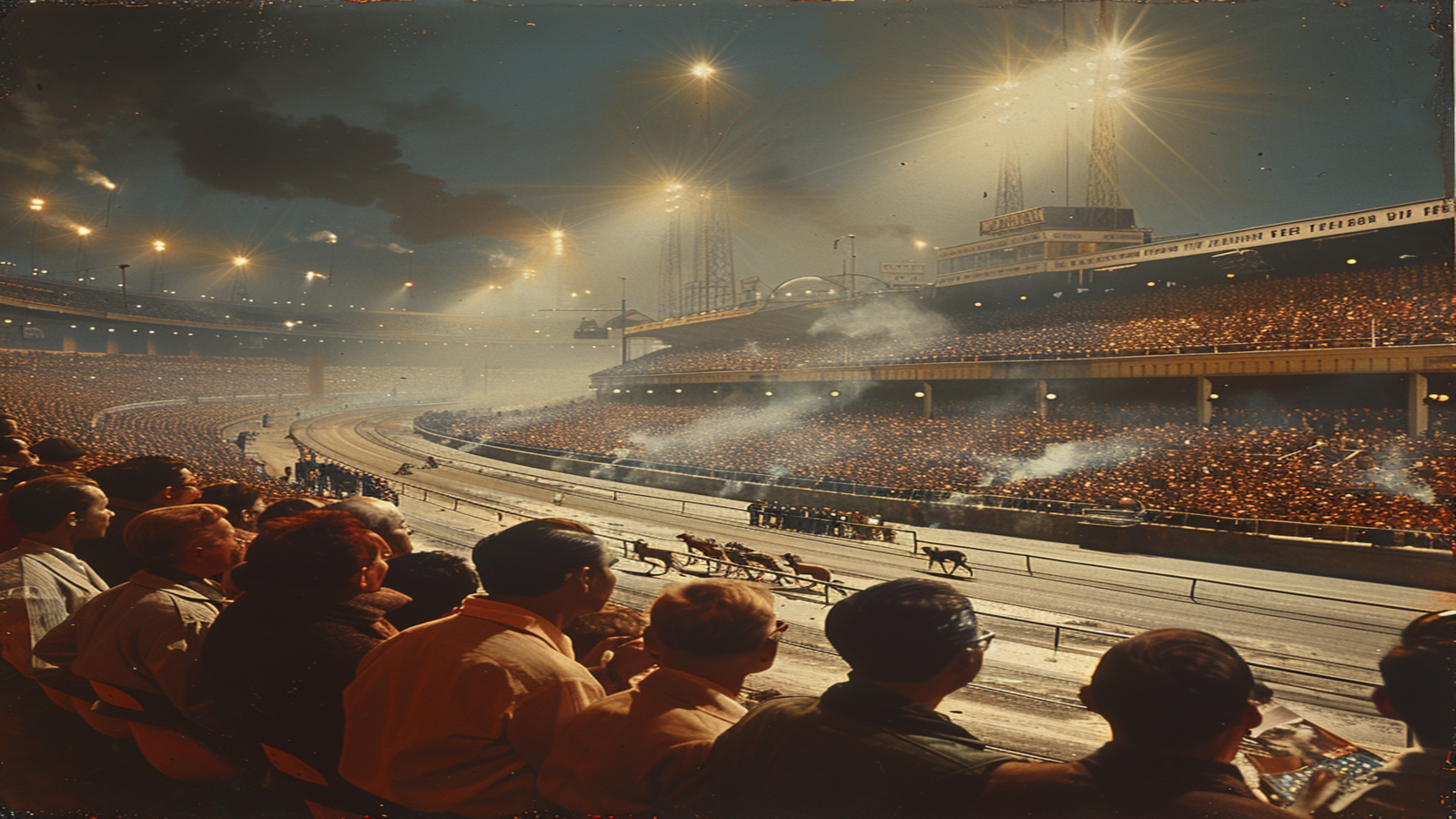Greyhound racing is a regulated sport where dogs compete by racing around a track, with track racing being the most common form on oval tracks. In many countries, greyhound racing is considered an amateur sport mainly for recreational purposes. Similar to horse racing in countries like Australia, New Zealand, Ireland, the United Kingdom, and the United States, greyhound racing also involves gambling.
During the 1920s and 1930s, greyhound racing became incredibly popular among working-class individuals looking for a thrilling night out with bright lights and plenty of betting opportunities. The sport experienced a rapid growth in popularity, with the first British Greyhound meeting taking place in Belle Vue, Manchester, in July 1926. Within ten years, 200 tracks were attracting over 32 million spectators annually.

American Charles Munn and Major Lyne-Dixson introduced the mechanical hare and oval track to Britain in 1926. Despite challenges in finding allies, they eventually partnered with Brigadier-General Critchley and Sir William Gentle to establish the Greyhound Racing Association with a financial contribution of £22,000. The first modern greyhound race in Great Britain was held at Belle Vue Stadium in front of 1,700 people, with seven greyhounds competing to catch an electric replica hare. The opening of White City Stadium and Harringay Stadium in London quickly followed.
While greyhound racing has been a long-standing tradition in British sports, its future is uncertain. The closure of numerous racetracks in recent years has raised concerns about the viability of the sport. The Greyhound Board of Great Britain now only licenses 21 tracks, highlighting the challenges facing the industry. Despite its status as the sixth most popular spectator sport in the UK, the sport's dwindling popularity is evident.
Disturbing statistics from the GBGB show the dark side of greyhound racing, with almost 2,000 dog deaths and nearly 18,000 injuries reported between 2018 and 2021. These figures underscore the harm inflicted on the dogs forced to participate in the sport. The breeding practices, living conditions, and treatment of racing greyhounds paint a bleak picture of their welfare. The industry prioritises profit over the well-being of these animals, leading to suffering and death.
As time goes by, the online gambling industry is growing in importance. In the last decade, the online betting scene has evolved beyond expectations, becoming a global phenomenon. Surprisingly, the UK betting industry is now one of the world's largest, which is remarkable for a small island.

When it comes to greyhound racing betting, you have the option to either bet on the winner or take a more strategic approach for higher payouts. The two most common ways to bet on greyhound racing are to choose a dog to win or to back a dog to place in the top two. While choosing a dog to win may result in bigger winnings, betting on a dog to place increases the chances of a payout, albeit at a lower rate. The variety of betting options available for each race makes greyhound racing betting exciting and diverse. Betting on the winner is just one of the many ways you can participate in greyhound racing betting.
The Bible specifically mentions the greyhound as the only dog breed, known for their incredible speed second only to cheetahs. Despite a decrease in greyhound tracks in the UK, statistics reveal a strong interest in greyhound racing among sports enthusiasts. It is important to remember that greyhounds are living beings deserving of love and care. Ending greyhound racing can be achieved through actions rooted in compassion and education.

